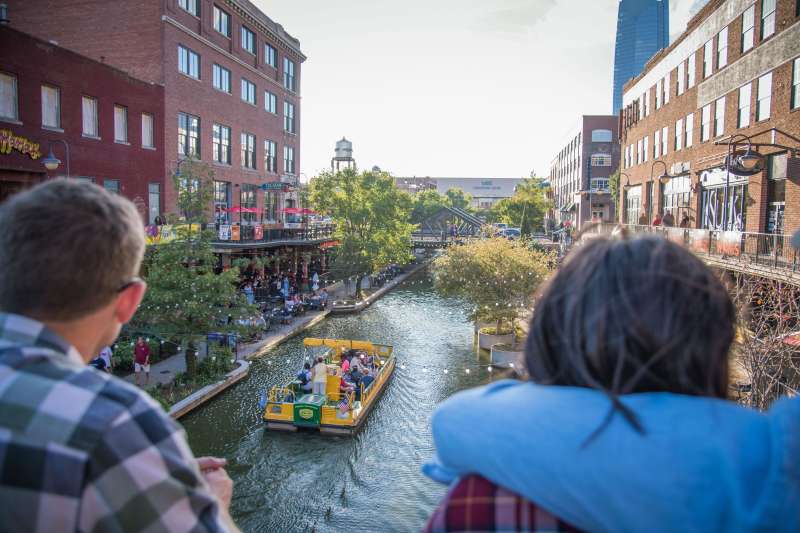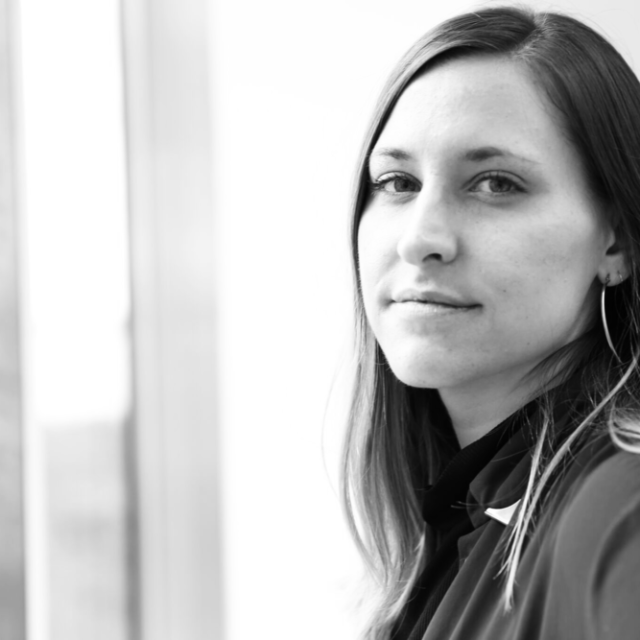The Best Places to Live Are Resilient, Unique and Economically Thriving

There’s a P.E. teacher in Portland, Oregon who spends his Wednesday mornings leading a brigade of kids to school on bike.
Watching them zip through the city — their helmeted heads bobbing in unison to music blasting from a loudspeaker; joggers and crossing guards smiling as they pass — is a raucously joyous spectacle. Millions of people have tuned in, thanks to social media, and a camera “Coach Balto” lugs along for the ride.
On the opposite side of the country, a group of New Yorkers who meet in a Brooklyn basement to sing multi-part harmonies of Sia songs and showtunes have also wooed the online masses. And in Los Angeles, a near-constant livestream of a woman who distributes food and hygiene products from the back of her van to homeless people on Skid Row has been a social media superstar for five years running.
Collectively, we’re all a bit discombobulated from the residual effects of the pandemic, and the two-plus years of mandated agoraphobia it subjected us to. Economic uncertainty (among other anxieties) is also taking up a lot of shared brainspace these days, and these little snippets of human connection make for a welcome palette cleanser.
At the same time, almost as a side effect, these recorded vignettes of communities forming in real time have managed to put an extremely fine point on something economists, city planners and publications like Money have grappled with for a very long time. What is it, exactly, that makes a dot on the map feel like somewhere? That is, what distinguishes a place people want to live from one people have to live?
It’s not about the square footage of the average home, or the scenery that surrounds it. What truly makes a place a place is a sense of belonging, driven by the powerful energy of people who want to be part of something bigger than themselves.
This year’s Best Places to Live isn’t just about numbers. We chose 50 cities and towns that offer affordability, good schools and strong job markets. But more than that, these are places with a palpable spirit, nurtured and sustained by engaged citizens and receptive public officials.
Take Oklahoma City.
Twenty years ago, OKC’s downtown was dominated by a tangle of parking lots and sterile office buildings. Nobody went there who didn’t absolutely have to, so outside of the 9 to 5 grind, the urban core of Oklahoma’s largest metro was virtually desolate.
To jumpstart its stagnant economy in the mid-90s, Oklahoma City embarked on an earnest and high-profile campaign to bring United Airlines' new headquarters within its borders. But since this was Oklahoma City in the mid-90s, the airline went with Indianapolis instead.
Taking this rejection as a sobering wake-up call, city officials launched a series of wildly ambitious redevelopment projects collectively dubbed MAPS (Metropolitan Area Projects). Just a few months later, the domestic terrorist Timothy McVeigh set off a homemade bomb in the center of the city, claiming 168 lives and reducing a swath of its already-battered downtown to rubble.
This, by all accounts, should have been impossible to bounce back from. And yet, today, Oklahoma City is more alive than it's ever been.
A sparkling, mile-long canal now carves a path through a city center once overwhelmed by blight, and teems with water taxis ferrying vacationing families and giddy locals on first dates. Pedestrian-friendly neighborhoods with expanded sidewalks have replaced dangerous, one-way streets, and a seven-mile stretch of river that was once so neglected municipal landscapers had to periodically mow patches of vegetation that were overtaking it. Now, it hosts competitive rowing events, river cruises and kayaking trips. It’s also one of the fastest-growing metros in the U.S, with a booming job market and affordable cost of living that consistently earns accolades from Kiplinger, U.S. News, Zillow and others.
OKC wiped its slate clean, and rebuilt itself from the ground up with the MAPs plan as fuel. But make no mistake: the people of Oklahoma City were the driving force behind its transformation.
Unlike conventional city development initiatives, OKC residents vote directly on proposed projects, determining which ones get the greenlight. Approved projects are then overseen by an advisory committee composed of citizens, and are funded by a city sales tax also set by voters — allowing MAPs to exist outside the constraints of municipal budgeting and the machinations of political agendas. Oklahoma City residents have approved $2.83 billion worth of investment in their city since 1993, according to a report by Harvard University’s Data-Smart City Solutions project, and that money has facilitated the construction of public schools, performing arts centers and everything in between.
Together, as a unified community, OKC locals and policy makers built a liveable, walkable city with a distinct identity; a living, breathing organism powered by more than just cars and conference calls. It’s a remarkable transformation, and it’s not an isolated one.
Throughout the U.S. cities and towns are taking extraordinary measures to cultivate a sense of “place,” and much of the transformation is being spearheaded by engaged citizens themselves.
In Detroit, a growing cadre of neighborhood “block clubs” is harnessing the power of time-tested grassroots organizing efforts like phone trees and community luncheons to drive redevelopment, beautification and crime prevention. Likewise, the city has won a number of urban planning awards for revitalization efforts that put locals front and center. Detroit’s YOUTH-CENTRIC Neighborhood Framework project, in which a local youth council worked side-by-side with city leaders, community organizations and design firms to build the framework for planned changes to residents in Detroit’s Cody Rouge and Warrendale neighborhoods. The city is also home to Outlier Media, an online nonprofit newsroom that publishes laser-focused service journalism on “navigating and understanding life across Detroit.” Popular guides on the site include “How to follow the money in campaigns,” “how to buy a house in cash,” and, fittingly, “How to start a block club in Detroit.” Eleven years after filing for Chapter 9 bankruptcy — the largest in U.S. history — the city is attracting tourism, venture capital and real estate investment at a rapid clip.
Metuchen, New Jersey, a New York City commuter town once drifting towards suburban monotony, has transformed itself in spectacular fashion into the modern version of a Norman Rockwell painting in less than a decade.
Thanks to The Metuchen Downtown Alliance, a local nonprofit, the once-ailing city now bustles with life; reinvigorated by a diverse group of neighbors that buzz in and out of locally-owned ice cream shops, boba cafes and tequila bars. A full calendar of cultural events draws scores of visitors to its picture-perfect downtown, who flock to Metuchen to celebrate restaurant week, Lunar New Year and more. (Last year, Metuchen hosted a Taylor Swift-themed dance party for tweens and a professional wrestling rumble, among others).
Of course, None of this is useful to residents who can’t make ends meet. To locals, it doesn’t matter how impressive your municipal parks are or how many cute cocktail bars are popping up downtown, if they don’t have the time or the disposable income to make use of them. The inescapable reality of living in the U.S. in 2024 is that, now matter where you live, how you live is inextricably linked to the relationship between how much money you make and how much your rent or mortgage costs. And that delicate balance is liable to shift when an influx of new residents decide that they, too, want to call your community home.
No place is immune to these challenges, but the most resilient ones, the “best” ones, are confronting the dichotomy between longtime locals (typically from historically marginalized and underserved communities) and newcomers (an outsized portion of which are likely to be affluent, highly-educated and white) with infrastructure and policy designed to propel the city forward while ensuring that no one gets left behind.
In Detroit, a new down payment assistance program is lowering the financial barriers to the housing market. The initiative builds upon the success of the city’s 0% Interest Home Repair Loan program, which provides much-needed support to homeowners grappling with the costs of maintaining their properties.
In Boise, where an influx of newcomers has spiked housing costs for locals, a non-profit mortgage broker called NeighborWorks Boise has built “pocket neighborhoods” of mixed-income housing comprised of energy-efficient, single-family homes oriented around open green spaces that homeowners work together to maintain. As a Community Development Financial Institution (CDFI), Neighborworks also provides below-market housing loans and down payment assistance to the families who live in these homes.
Oklahoma City, too, has faced the familiar threat of dwindling affordable housing stock in the wake of its revival, and a number of public initiatives are working to address it. Pivot Inc., a local nonprofit, has built dozens of tiny homes in the city to serve as transitional housing for young people who are experiencing homelessness. The latest iteration of the city’s MAPS program is converting a former Motel 6 into additional housing units for the homeless population, along with a broad slate of affordable housing initiatives for low- and moderate-income families. Other MAPs project underfoot for 2024 and beyond include new parks and community gardens, a senior wellness center, additional sidewalk, bike lane and walking trail improvements and dozens of others.
For places like this one, the pursuit of a livable, equitable revival — one that benefits everyone who jogs in its parks, dines in its cafes and commutes through its street — is an ongoing challenge. But it’s a test some cities are passing with flying colors, and in doing so, are proving unequivocally that every place has the capacity to become a “best place.”


